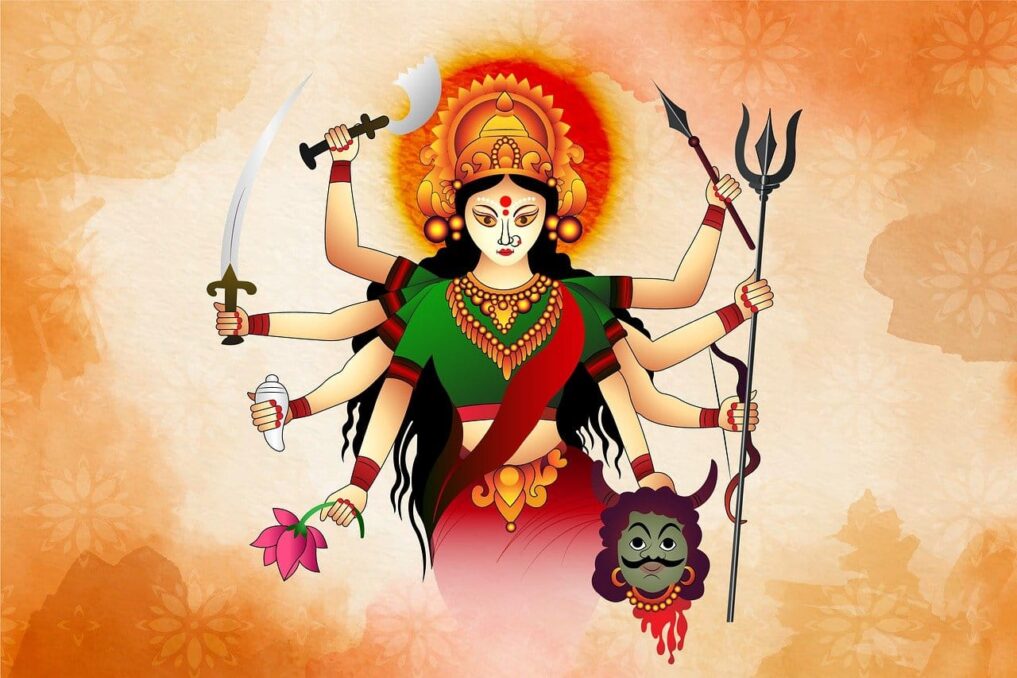She is considered the consort of Lord Shiva and is often depicted as a serene and compassionate figure.
Significance of Ashtami
- Divine Motherhood: Ashtami celebrates the nurturing and protective aspect of the Divine Mother, symbolized by Maheshwari.
- Harmony and Balance: Maheshwari is associated with the harmonious balance between the masculine and feminine energies.
- Spiritual Enlightenment: The festival is believed to be auspicious for spiritual practices and seeking enlightenment.
How Ashtami is Celebrated - Puja and Offerings: Devotees offer prayers and perform puja to Maheshwari, seeking her blessings and protection.
- Fasting: Many people observe a strict fast on Ashtami, abstaining from food and water as a form of devotion.
- Bhajan and Kirtan: Devotional songs and hymns are sung in praise of Maheshwari, creating a spiritual atmosphere.
- Garba and Dandiya Raas: In some regions, Ashtami is celebrated with traditional dance forms like Garba and Dandiya Raas, symbolizing the cosmic dance of creation and preservation.
Symbolism of Maheshwari - Serene Appearance: Maheshwari is often depicted as a serene and beautiful goddess, symbolizing her nurturing nature.
- Lotus Flower: The lotus flower is associated with Maheshwari, representing purity and enlightenment.
- Cow: The cow is considered a sacred animal in Hinduism and is often associated with Maheshwari, symbolizing abundance and prosperity.
Ashtami is a significant day in the Hindu calendar, honoring the divine feminine energy and celebrating the nurturing and protective aspect of the Divine Mother. It is a time for spiritual reflection, devotion, and seeking the blessings of the powerful goddess Maheshwari.




